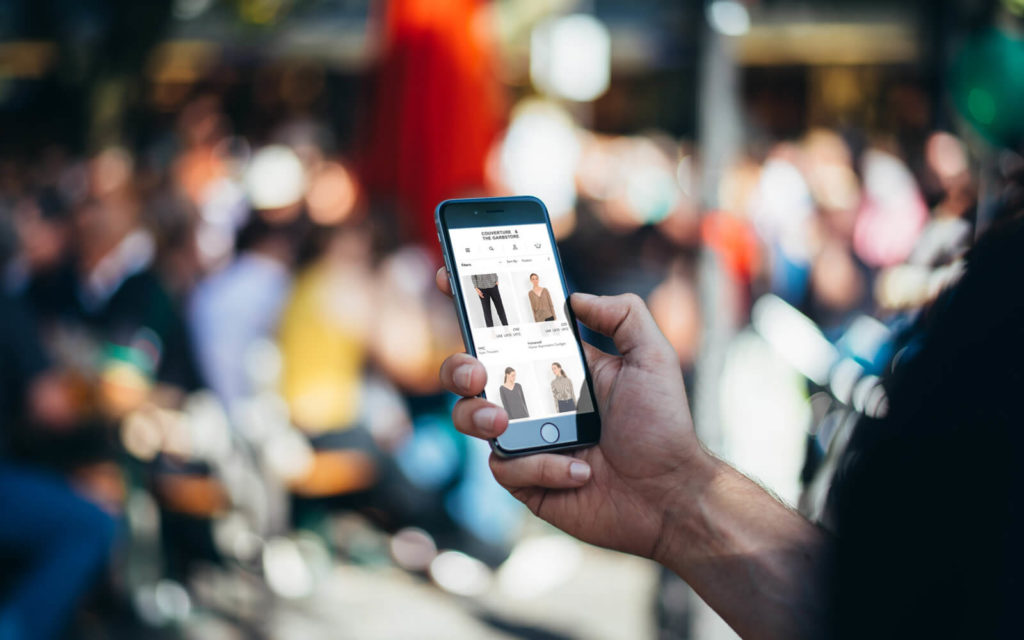Mobile in Today’s Journey

As we’re fast approaching Q2, we take a look at some of the facts and stats around mobile that you just cannot afford to ignore When exactly the shift from mobile to desktop usage happened depends on both your source and what specifics you’re looking at. According to a study by Comcast, way back in 2014, they found mobile usage represented 60% of the total time spent online.
Typically though, back then, mobile wasn’t converting the way businesses wanted it to. Econsultancy’s report from a couple of years back, Understanding the Customer Journey, took a closer look at the role mobile plays within various phases of the customer journey. Their data shows that a large proportion of customers are primarily interacting with their businesses on mobile while researching products that they later buy online.
In 2016 though the tipping point was almost upon us. Around 49% of e-commerce transactions involved a smartphone, and this is expected to increase to more than 80% by 2020 (report by OC&C Strategy Consultants).
Your customer is on their phone (lots!)
In fact, one of the most recent studies of its kind found that people, on average, are spending around 3 hours a day on their phones. The time spent on phones isn’t all for shopping of course, our phones are our entertainment, they’re our communication tool, they’re how we research everything from what we should have for dinner tonight, to where best to buy the ingredients for it.
Mobile doesn’t just need to be featuring on your planning, it needs to be at the forefront of your marketing strategy, and here we’ve outlined what we think are the 3 key areas to focus on right now.
#1 Simplify checkout
The one-step checkout in Magento 2 has undergone a number of improvements and changes to its aesthetic appeal and general flow. This focus and refinement has been to directly make sure customers aren’t running scared at this crucial stage.
With Amazon’s 1-Click check-out’s patent gone for good, these certainly are happy times for the customer in a hurry: Both opportunity and challenge is rife in this area, and the smart merchant will certainly be aiming to keep a step ahead of developments. This kind of streamlining is even more important on mobile, when customers are more likely to be shopping whilst on other tasks too Payment gateways like PayPal makes checking out easier for millions of potential customers, and having options like clicking to use the billing address for delivery too also stops consumers from tiring. You can help to keep checkout address tasks to a minimum by using a postcode lookup tool like Addressy.
You can:
- Let customers checkout as a guest – don’t make it essential for them to sign up for an account, you can ask them to do this later, after their purchase, and offer them an incentive to do so.
- Remove any potential obstacle between you and a new customer – the smoother a sales funnel is, the higher your conversion rate will be
- Consider Touch ID for logins and checkouts – stores such as ASOS now allow this for all registered users on iPhones.
#2 Make Search Smarter
Especially considering that mobiles are so often the research tool of choice for customers, making search prominent should be the goal – the search bar is the fastest route of discovery, and if it’s hidden or complex, customers will soon be leaving you for competitors.
Taking the time to improve your mobile site’s search function will improve your customer’s experience, and therefore see conversion soar.
You can:
- Position the search bar in a prominent location (e.g. in the header of the page) and on every page of your site. This will maintain consistency and make it easy for shoppers to access your product catalogue
- Change the colour – all functions are fighting for space on the small smartphone screen, but search needs to be clearly visible nonetheless. Having the function in a different colour to your site’s main scheme is one way to make it stand out
- Choose good defaults – based on your analytics on what customers search for, use defaults that’ll save your customers time, and give them new ideas too
#3 Use Social Apps
The two biggest trends in the last decade, are doubtless the exploding rates at which we buy online and engage in social media. And the last few years, have seen these two prominent aspects of life collide. As much as 6% of mobile traffic to UK retailers websites is driven by social media apps like Snapchat and Instagram.
You can:
- Focus on messaging Apps – Messaging platforms Whatsapp, WeChat and Messenger now have a wider following than the top social networks
- Use videos – an estimated 43% of marketers planning to use interactive video on social in the next few months
- Utilise social for customer service – With emerging technologies like chatbots becoming the norm, today’s customers are becoming more and more accustomed to their queries being dealt with immediately. Now around 78% of people who complain to a brand via Twitter expect a response within an hour (Source: Lithium)